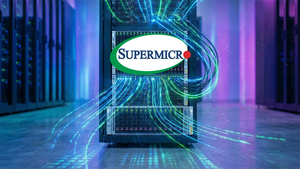Words by Amy Brown
SOURCE: TriplePundit
DESCRIPTION:
Neurodivergent people — those who have differences in brain function and behavioral traits — are often overlooked in diversity, equity and inclusion (DEI) strategies. Today that is changing, with a recognition that innovation thrives when inclusion and collaboration include the lens of neurodiversity.
Often referred to as the “invisible” disability, neurodiversity affects 15 to 20 percent of the global population. It covers a range of conditions, including attention deficit hyperactivity disorder, autism spectrum disorder (ASD) and dyslexia, which often involves difficulties with reading and spelling.
There is a growing movement to uncover the strengths of neurodiverse individuals and utilize their talents to increase innovation and productivity of society as a whole. Many companies are joining that movement, in recognition that neurodiversity offers a competitive advantage.
The movement to celebrate and bring neurodiversity into the open starts at the individual level. Allison Cramer of BMC Software, who has Asperger's syndrome, and Giselle Mota of ADP, who has dyslexia, have been ambassadors for neurodiversity in their companies. They know firsthand that the talents and contributions of neurodiverse people benefit not only those individuals, but also their organizations.
Discovering a superpower
Allison Cramer, vice president of solutions marketing for the digital service operations management business unit at BMC Software, learned she had Asperger's as an adult, after her daughter was tested and diagnosed with the condition.
Until then, she hadn’t identified as someone on the autism spectrum, but the diagnosis made sense. “That’s why it feels like my default settings are different than everybody else. It made me kinder to myself,” Cramer says. Now she has coping mechanisms for when certain social behaviors like passive-aggression are hard for her to track, “because here’s a person saying one thing and doing another, and my brain doesn’t work that way,” she says. “And why should it?”
Giselle Mota, a principal consultant for the Future of Work team at ADP, was a young child when her dyslexia was diagnosed. “I did a lot of things backwards, and saw things backwards,” she says. “I would often write in combinations of letters and numbers, and it was difficult for me to retain what I was learning.” Her first-grade teacher recognized the problem and allowed Mota to hone her strengths. “When she did that, everything unlocked for me,” she explains. “I was good at math and good at pattern detection, and this angel of a teacher had me sit beside her in class and work on side projects that used those skills. I went from being someone who was struggling to being gifted.”
Mota took advanced courses in high school, earned bachelor’s and master’s degrees, became a college professor, and founded her own businesses before joining ADP. All through that journey, “I tapped into a brilliance in myself that I didn’t know how to tap into before, my superpower,” she says. “It gave me an awareness that everyone has within them their own superpower, their own brilliance. That’s led me in my career to see people for the potential they can bring and to create the opportunities for them to be their best.”
For both Mota and Cramer, their neurodiversity has contributed to their ability to be innovative thinkers in their organizations. “Maybe I don’t say it in the way everybody wants to hear it, but I’m able to find innovative, exciting, interesting answers to questions other people weren’t sure could be solved,” Cramer explains.
How tech benefits from neurodiversity
When she was told her daughter would probably be socially awkward, and asked if she knew any socially awkward people, Cramer laughed, saying: “I work in tech. I know entire buildings of people who are socially awkward. These are my people.”
She’s not sure whether it’s because people are discussing neurodiversity more openly, or if neurodiverse people gravitate toward tech because it is more welcoming and their skillsets are more valued, but “most of my coworkers can talk to me about somebody they know who’s on the spectrum, or [share] that it touches them in some way,” Cramer tells us. The qualities she and other people on the spectrum bring to the table, like a focused ability to live in the details and to see patterns easily and quickly, are increasingly appreciated in the tech sector.
Similarly, Mota’s passion is helping organizations use artificial intelligence (AI) and adaptive technologies to help people learn better at work. It is an outgrowth of her own innate ability to “take complex concepts and break them down for people,” she says. “In the world that I work in, a space of futuristic thinking, there are a lot of technologies people are trying to get their minds around, like the metaverse, virtual reality, augmented reality, and so on. I have the ability to take all of that and make it accessible to people and to tailor it to the specific audience I’m speaking to. I’m also a great connector of thoughts, which helps when we have so many divides on different issues; it’s led me to focus on ethics and bias in artificial intelligence.”
This type of insight is hugely valuable, as the endpoint of technology is to reach as many people as possible, Mota adds. “To create a technology nowadays, it must be diverse enough to reach the mass population. Consumers are diverse, and we want to create a user experience that doesn’t leave anyone out.”
Inclusion can cascade change
For Cramer, the distinction between diversity and inclusion is important. “Diversity is, ‘I’m here,’ and inclusion is, ‘I’m accepted,’ and I have been,” she says. “The more I share about my own personal experience, the outpouring of interest has been incredible. My coworkers thank me for speaking up, [and tell me] that it made them feel comfortable about talking about their own issues.”
The awareness has also led to Cramer’s colleagues recognizing how they can be more inclusive at work. For example, when she gave presentations before large groups, and tapped her hand, a colleague thought at first it was nerves. But knowing that she was on the spectrum, he recognized that it was the bright lights and the loud noises. She acknowledged that it was her sensory issues that led to her discomfort.
“He said to me, ‘You can’t be the only one in this room who has these concerns,’ and so the next time we had a big event, they turned the volume down and did not have the same bright lights,” Cramer explains. “It didn’t detract from having a positive event, and it did tremendous things for me.” When she is leading group projects, she brings the same awareness to her teams: Recognizing not everyone will be comfortable sharing with a large group, she invites them to share one-on-one with her, in smaller groups or even in written communication.
Mota also advises companies that want to do more to embrace neurodiversity — and all types of diversity — to be certain to include people of all backgrounds in decision-making processes.
At ADP, her leadership on the issue of diversity has led to a company-wide pilot project launching later this year focused on hiring more neurodiverse people. “It is people like me who are raising their hands and saying, ‘Hey, bring more people like us to work.’”
This article series is sponsored by BMC Software and produced by the TriplePundit editorial team.
Image credit: tongpatong/Adobe Stock
KEYWORDS: triplepundit, BMC Software







